SMPTE 2014 Technical Conference Hits Record Attendance
WHITE PLAINS, N.Y.—The Society of Motion Picture and Television Engineers announced that the SMPTE 2014 Annual Technical Conference & Exhibition concluded successfully with record-setting paid attendance. SMPTE 2014 attracted approximately 2,000 attendees representing 31 countries: the U.K., Japan, Germany, Belgium, China, South Korea, Hungary, and France, as well as the U.S. and Canada. Paid registrations were up 11 percent over 2013.
“SMPTE 2014 demonstrated why the Society’s technical conference and exhibition has become the premier annual event for motion-imaging and media technology, production, operations, and the allied arts and sciences,” said Pat Griffis, SMPTE education vice president. “New display and acquisition standards, distribution formats, business models, virtualization models, and ways of moving content over IP are coming to the forefront and having a real impact on the industry. By offering insight into these and related advances, SMPTE 2014 empowers businesses and individuals to take entertainment media to the next level.”
For the first time, the pre-conference SMPTE Symposium was hosted by the Hollywood Post Alliance. Held at the El Capitan Theatre, “Making Do With More” was a day-long event that included creative sessions with renowned filmmakers, cinematographers, visual effects artists, sound specialists, and colorists providing an in-depth discussion on the challenges they face and the expansive opportunities now open to them with new tools to support their vision. The Symposium also included a demonstration area supported by Canon, where Sony Electronics, FilmLight, Dolby Laboratories, Technology Made Simple, and Sundog Media Toolkit conducted demonstrations.
“The Symposium is an example of how HPA and SMPTE can add value to each other,” said Leon Silverman, HPA president. “The Symposium’s focus on creativity as it relates to technology complements SMPTE’s focus on technology and standards.”
The Women in the Technology Workspace Luncheon, produced by SMPTE and HPA Women in Post, featured Michelle Munson, CEO and co-founder of tech firm Aspera; Ron Bailey, vice president, human resources at Warner Bros. Entertainment; and Rob Kaufman, founder and CEO of Divorce Dialogue who specializes in the behavioral differences between men and women. The discussion centered on differences between women and men in the technology workplace and on how women can better position themselves for advancement.
In the SMTPE 2014 opening keynote, Chris Fetner, director of global content partners operations at Netflix, explained that the complicated task of empowering subscribers requires an increasingly higher quality of audio and video assets, more metadata, and localized artwork. In addition to reporting that Netflix was the first to market with the ultra-high-definition TV streaming series “House of Cards,” Fetner also noted the importance of SMPTE’s Interoperable Master Format standard, deeming it the cornerstone of Netflix expansion. The release of original miniseries “Marco Polo” in December 2014 will represent the first Netflix content delivered in the IMF 2+ extended format. Fetner’s keynote presentation is available, on-demand, to SMPTE members at www.smpte.org/smpte2014-netflix-keynote.
Mark A. Aitkin, vice president of advanced technology at Sinclair Broadcasting Group, delivered the Industry luncheon keynote. Aitkin suggested that broadcasters missed an opportunity by not putting better support behind ATSC mobile television and called for a reinvention of broadcasting as a conveyor of uniquely wireless, unconnected bits to billions of devices. He also noted that the mobile-connected tablet is the consumption device of the future, stating that mobile video consumption will increase to account for two-thirds of all mobile data traffic by 2017.
SMPTE Hollywood regional governor, Paul Chapman and SMPTE Fellow Jim DeFilippis served as program chairs for SMPTE 2014. Over the course of the event, more than 80 presentations were made through technical conference sessions that covered hot-button topics ranging from networked media, file-based workflows, cloud security, asset management, UHDTV, higher frame rate and audio technology. This year’s technical papers were drawn from the U.K., Japan, Germany, India, Norway, China, and Canada, as well as the U.S. The sold-out exhibition hall featured displays and demonstrations from more than 80 leading technology and solution providers.
The inaugural SMPTE Student Film Showcase, hosted by Howard Lukk, a SMPTE standards director, was sponsored by Netflix and demonstrated how the technical and artistic talents of young filmmakers can result in meaningful content. The short films presented during the Showcase featured wide-ranging themes, from “Calibration Conundrum,” which discussed display matching and the human visual system, to “Light,” a beautifully photographed ballet sequence. All the movies were screened in the SMPTE-DCP (Digital Cinema Package) format, courtesy of Sundog Media Toolkit. SMPTE Program Committee member Corey Carbonara, professor of film and digital media in the Communication Studies Department at Baylor University, said that using the cloud platform to convert their films to SMPTE-DCP was a great learning experience for students.
At the Annual Membership Meeting, SMPTE 2014 celebrated the establishment of The Next Century Fund. SMPTE Executive Director Barbara Lange recognized the fund’s three cornerstone sponsors, The Walt Disney Co., Panasonic, and Dolby Laboratories, which brought the fund to the $1 million benchmark.
On the final night of SMPTE 2014, award-winning broadcast journalist Frank Mottek served as master of ceremonies for the Honors & Awards Ceremony, bestowing Honorary Memberships on Leonardo Chiariglione and George Lucas, with John Logie Baird receiving the SMPTE Honor Roll Award (posthumously). Ioan Allen received the Progress Medal. (The complete list of honorees is below.) The evening concluded with the third-annual SMPTE Jam.
The SMPTE 2015 Annual Technical Conference & Exhibition is scheduled for Oct. 26-29, 2015 at the Loews Hollywood Hotel in Los Angeles.
Honorary Membership in the Society recognizes individuals who have performed eminent service in the advancement of engineering in motion pictures, television, or in the allied arts and sciences. It is the Society’s highest accolade..
George Lucas is best known as a writer, director, and producer responsible for iconic American films, but Lucas is also a pioneer in the adoption of new technologies for motion picture production and exhibition. Lucas founded Industrial Light & Magic in 1975, and it has gone on to produce visual effects for nearly 300 films. Among many other innovations, ILM invented the OpenEXR file format in 2000 to support high dynamic range imaging. The animation studio Pixar was founded as the Graphix Group of Lucasfilm in 1979. In 1981, Lucas co-founded the sound company THX to advance the quality of theatrical sound systems. In 2002, “Star Wars: Episode II-Attack of the Clones” was the first major Hollywood feature to be captured digitally, on 24p high-definition video cameras. In his determination to push the medium of cinema with new technologies and techniques, Lucas encountered both support and skepticism. It is now clear that his perseverance and vision were key factors in the eventual widespread adoption of digital cinematography in motion picture production.
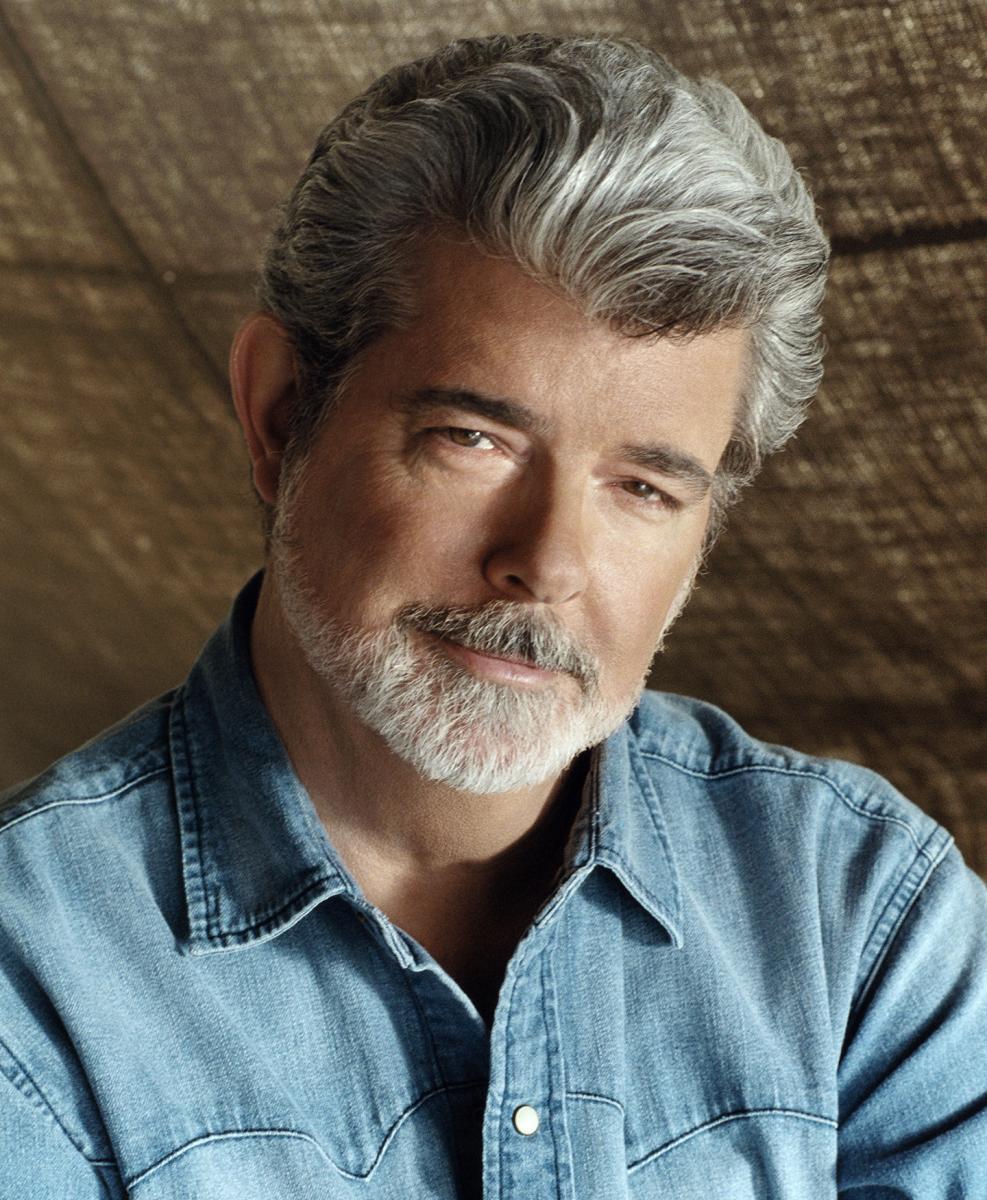
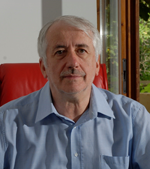
Leonardo Chiariglione is generally considered to be the driving force behind the development of the MPEG set of standards that underpin today’s many digital moving pictures applications. Chiariglione’s constant push for a simple, standardized moving pictures toolbox began in 1988 with the founding of the International Standards Organization Moving Picture Experts Group group, and it continues to the present day. Chiariglione has forcefully maintained focus on timely standardization, technical simplicity, and efficiency. The wide adoption of MPEG-2 to MPEG-4, in particular, is apt testimony to the contribution Chiariglione and the MPEG group has made to date.
The Honor Roll
John Logie Baird (1888-1946) is inducted into the SMPTE Honor Roll in recognition of his lifelong contributions as a pioneer in television technology. His accomplishments include the first live television demonstration (in 1925), the first publicly shown color television system (1928), and the first fully electronic color television picture tube. The British Broadcasting Company (BBC) began transmitting with the Baird system in 1929. Baird continued to develop new technology including a mechanical color system in 1939 (adopted by CBS/RCA); a 500-line 3-D system in 1941; and an electronic 600-line color display in 1944. Baird lobbied for post-war standardization of his 1,000-line electronic color television system.Photo Credit - The LIFE Picture Collection, Getty Images
The Progress Medal is the highest SMPTE medal award, and it recognizes outstanding technical contributions to the progress of engineering phases of the motion picture, television, or motion imaging industries. Ioan Allen has earned the 2014 Progress Medal Award in recognition of his many contributions to the motion picture and television industry, specifically his innovations in sound research and development programs at Dolby Laboratories, including Dolby Stereo, Dolby Spectral Recording and Dolby Digital, as well as his ongoing contributions to worldwide standards organizations.
The Archival Technology Medal recognizes significant technical advancements or contributions related to the invention or development of technology, techniques, workflows, or infrastructure for the long-term storage, archive, or preservation of media content essence.
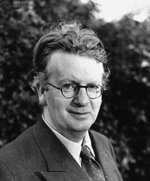
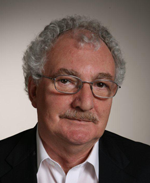

The 2014 award was presented to Neil Beagrie in recognition of his long-term contributions to the research and implementation of strategies and solutions for digital preservation. Beagrie played a key role in the development of a collaborative approach to the study and dissemination of knowledge relating to research data management, digital preservation, digital curation, and data archive. He was responsible for establishing the Digital Preservation Coalition, with more than 35 major members from industry, national libraries, broadcasters, and archives. In addition, he was responsible for establishing the digital preservation program within the Joint Information Systems Committee. This program helped to create the Digital Curation Center, which seeks to actively manage, preserve, and curate digital data throughout the research life cycle.
The David Sarnoff Medal recognizes outstanding contributions to the development of new techniques or equipment that have contributed to the improvement of the engineering phases of television technology, including large-venue presentations. Clyde D. Smith Jr. received the 2014 award in recognition of his pioneering work in the application and deployment of digital technologies in the broadcast network environment, including the development of automated, server-based closed-captioning systems, as well as optimization of digital media to address the issue of audience disaggregation and to provide the capability to seek out viewers on their preferred platform and make a rich selection of programming available to them in their preferred environment. Smith’s experiences, contributions, and support have provided critical guidance to the development of a meaningful educational experience for local broadcast engineers.
The Digital Processing Medal recognizes significant technical achievements related to the development of digital processing of content for cinema, television, games, or other related media. The 2014 award was presented to Barry Haskell for his contributions to the digital transmission and coding of images over a 44-year career.Haskell has published more than 70 technical papers and holds more than 125 patents.He is the author or co-author of three books, including one of the foundational books on MPEG.Haskell managed the compression research group at Bell Labs, making major contributions to the MPEG standards, and followed that at Apple Computer, where his research team made significant contributions to the H.264/AVC standard.
The Kodak Educational Award honors an individual who advances the educational process at any level through innovative and inspirational methods, and it recognizes outstanding contributions in new or unique educational programs utilizing the technologies of film. Steve Wright received the 2014 award for his service in visual effects as an accomplished practitioner and master trainer. Wright’s specialization is in the digital domain, but he has long been an advocate for visual effects education in workflow for both film and digital intermediates. He has worked to perfect and to implement color management paradigms in compositing, cementing the place of film in digital post production and promoting stronger understanding of film’s value in digital compositing. Wright has been a master visual effects trainer since 2005, and his two books, “Compositing Visual Effects: Essentials for the Aspiring Artist” and “Digital Compositing for Film and Video,” are among the very few that actively instruct in film color science for digital intermediate and compositing.
The Samuel L. Warner Memorial Medal recognizes outstanding contributions in the design and development of new and improved methods and/or apparatus for motion picture sound, including any step in the process. Ville Pulkki received the 2014 award for his outstanding contributions in the field of spatial sound reproduction and multichannel audio rendering, including the two-dimensional and three-dimensional panning methods of vector-base amplitude panning and non-unitary vector-base amplitude panning. The value of Pulkki’s contributions is underscored by the emergence of immersive sound in the cinematic and broadcast arts.
The Technicolor/Herbert T. Kalmus Medal
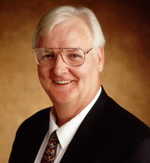

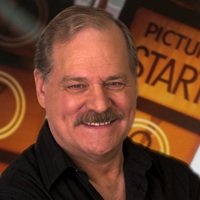

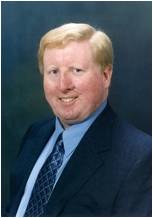
recognizes outstanding contributions that reflect a commitment to the highest standards of quality and innovation in motion picture postproduction and distribution services. The 2014 award was presented to Jim Houston for his leadership and contributions in the application of digital technologies to motion picture production and postproduction processes. As an industry leader, he established a state-of-the-art digital finishing facility for a wide range of postproduction processes including digital intermediates, digital cinema mastering, and restoration. Houston has played a key role in the development of standards related to the Academy of Motion Picture Arts and Sciences’ Academy Color Encoding System, as well as various standards for video and motion picture mastering.

The Workflow Systems Medal recognizes outstanding contributions related to the development and integration of IT file-based systems and infrastructures into production processes. Philip Tudor received the 2014 award for his foundational contributions to professional media file formats and for early implementations of file-based workflows.Tudor has worked tirelessly in numerous SMPTE committees and in the Advanced Media Workflow Association, focusing on developing standards and specifications for file-based essence and metadata interchange.His pioneering work on tapeless audio and video capture, Material eXchange Format, and the Advanced Authoring Format led to the implementation of workflows at the BBC.Tudor continues file-based workflow innovation with the Digital Production Partnership and IP Studio, which focuses on file-based workflows for live television production within an Internet protocol environment.
The Camera Origination and Imaging Medal honors the recipient by recognizing significant technical achievements related to invention or advances in imaging technology including sensors, imaging processing electronics, and the overall embodiment and application of image capture devices. Eric R. Fossum received the 2014 award in recognition of his leadership in the invention and development of the complementary metal-oxide-semiconductor active pixel sensor technology. This advancement was first published in 1993 while Fossum worked at NASA’s Jet Propulsion Laboratory. Additionally, he promoted the new technology to a broad range of manufacturers as a new way of making camera image sensors. CMOS image sensor technology is now widely deployed in motion picture and television cameras, cell phones, medical devices, security systems, and many other professional and consumer applications.
Each year, one SMPTE Journal Award is presented to the author of the most outstanding paper originally published in the SMPTE Motion Imaging Journal during the preceding calendar year. The 2014 SMPTE Journal Award will be presented to Andrew B. Watson for “High Frame Rates and Human Vision: A View Through the Window of Visibility,” published in the March 2013 issue of the SMPTE Motion Imaging Journal. Journal Certificates of Merit will also be presented to Benjamin Bross, Heiko Schwarz, and Detlev Marpe for their May/June 2013 Journal article titled “The New High-Efficiency Video Coding Standard.”
The Citation for Outstanding Service to the Society, which recognizes individuals for dedicated service for the betterment of the Society over a sustained period of time, was conferred upon five SMPTE members:

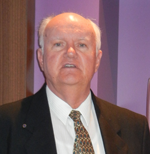
John Beckhaus, for his dedication and service to the Australia Section over the past decade. Beckhaus has served on the Section board since 2003, taking on the additional roles of membership chair, providing a contact point for queries from regional membership, and minute secretary, ensuring comprehensive reporting of both Section board and subcommittee meetings. He has also served six terms as audio visual chair for the biennial Australia Section conferences, managing the complex requirements of conference presenters. Beckhaus is a dedicated Section member, always working behind the scenes to ensure the success of the Australia Section meetings.
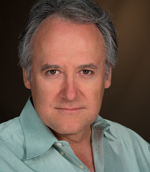
Siegfried G. Heep, for his contributions to the Hollywood Section, as well as his instrumental role in the reinvention of the Society’s annual Honors & Awards Ceremony. Heep has served as a role model for active involvement in SMPTE as both a Hollywood Section member and manager. In 2007, he was enlisted as the technical director for the newly reimagined Honors & Awards Ceremony, transforming the event from a small ceremony to the full-fledged, high-quality awards event that it has become today. Heep has reprised his role each year since, helping to improve the show in terms of technical production, quality, and prestige.
Get the TV Tech Newsletter
The professional video industry's #1 source for news, trends and product and tech information. Sign up below.
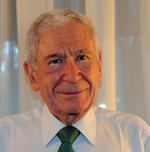
Federico Savina, for his leadership and support of the Italy Section over the past 25 years. As one of the original SMPTE Members who petitioned for the formation of the Italy Section in 1989, Savina has been a long-term contributor to the Section, serving the Section board for 10 years in the roles of secretary/treasurer and manager. Savina attends and contributes to all Section activities and was instrumental in bringing the SMPTE Regional Seminar to Rome in 2013. A professor at Roma University, Savina strives to raise the bar in digital cinema (D-Cinema) education, and he is working to provide his students with an introduction to the industry through participation in SMPTE.

T.J. Scott Jr. for his leadership and commitment to raising the standard of quality for Atlanta Section events. His close alignment with developing trends and innovative technologies, as well as his substantial contacts in the industry, have led to a collection of well-executed, technically inspired monthly meetings. Through Scott’s efforts, the Atlanta Section has seen growth in both its membership and meeting attendance. His contributions to the production of the Section’s 2007 “Video Over IP” seminar in particular set the bar for excellence in special event programming. All subsequent special events have been sold out, reinforcing SMPTE’s reputation for producing exceptional and inspired events.

Peter M. Weitzel for his instrumental role in re-establishing the SMPTE U.K. Section, and for his leadership in driving the growth of the Section and the quality of programming provided to its members. A driving force behind the U.K. Section, Weitzel’s enthusiasm, determination, and outreach, especially to students and universities, have contributed to the 200-percent increase in the Section’s membership during its first two years of operation. His passion for the Society’s core mission and goals is ever-present as he works to increase the visibility and impact of SMPTE at both a global and regional level.

The Excellence in Standards Award recognizes individuals or companies that have been actively involved in advancing the Society’s standards activities and processes. The 2014 award was presented to John Hudson for his sustained efforts in the development and evolution of standards relating to real-time electrical and optical streaming media interfaces for video and D-Cinema production. Hudson authored the SMPTE 3Gb/s serial digital interface standard in parallel with his work developing the necessary components, resulting in a rapid and successful adoption of the interface by the industry, and he is a key player in the development of 6 and 12Gbps UHDTV SDI interfaces. Hudson’s SMPTE work is characterized by commitment and competence, combined with an attitude of cooperation and collegial relations with colleagues and competitors.
Eight new SMPTE Fellows were recognized during the event: Hanno Basse, Thomas G. Edwards, Joseph J. Kane, Jr., John McCoskey, Andrew Quested, Vince Roberts, Jim Starzynski, and Colin R. Wright.
The Louis F. Wolf Jr. Memorial Scholarship is designed to help students further their undergraduate or graduate studies in motion pictures and television, with an emphasis on technology. The 2014 scholarship was awarded to two students: Victoria K. McGowen and Matthew Ross Donato, both students at the Rochester Institute of Technology. Each student received $1,500 in scholarship funds, and both will be attending SMPTE 2014 to accept their awards.
Victoria K. McGowenwas recognized by the selection committee for her drive and initiative early in her academic career. By the end of her sophomore year at RIT, McGowen already had gained experience working in multiple laboratories, as well as high marks in graduate-level courses. In addition to serving as a lab manager for an RIT lab supporting scientific work on technologies related to the motion-imaging sciences, she has taken on projects including development of a pipeline for real-time character animation using motion capture; development of an apparatus that can measure the latency of various displays with extreme precision; and creation of an anatomically accurate model of the human eye in Blender (an open-source 3D animation suite) with parameterized visual features that may be adjusted through a “home-brew” Python interface.


Matthew Ross Donato was recognized by the selection committee for his genuine interest in the SMPTE process and standards creation, as well as his ability to master both the art and science of filmmaking. Over the summer of 2013, Donato put his RIT motion picture science studies to work, serving in a television postproduction internship at NBC. He later earned a 2014 summer internship with the Academy of Motion Picture Arts and Sciences, Science & Technology Council, where he built ACES color transforms for digital cameras, calibrated and validated test equipment, and preformed psychophysical experiments. As part of his senior project work at RIT, he participated in SMPTE standards work.
